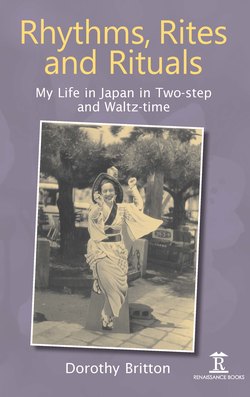Читать книгу Rhythms, Rites and Rituals - Dorothy Britton - Страница 14
На сайте Литреса книга снята с продажи.
ОглавлениеCHAPTER 4
How Marrying
Changes My Father’s Life
WHEN ALICE HILLER dropped in for tea that day in 1920, Frank was still a bachelor. In one of his letters to his uncle he writes:
I control these Works with its 300 employees, and keep the company’s books as evening amusement, so you can see that I have no time to burn on social repartee.
Frank did finally manage to obtain an accountant, a delightful Scot called Tom Chisholm, to take some of the burden off his hands. He had also told his uncle that the girls on The Bluff seemed to have little time for engineers. But my mother used to marvel why he had not married beautiful Elizabeth Keith the artist, who was the sister of the wife of his friend journalist John Robertson Scott. Famous for her wood-block prints of Japan and Korea, Elizabeth remained a good family friend of ours.
Frank lived across the road from the Zemma Works and in the interim between marrying Alice in Shanghai and bringing her back with him to Japan, Frank had the house enlarged and beautifully improved. He resisted moving up to The Bluff where all the foreigners lived. Feeling privileged to be in Japan, he refused to live in that completely Western enclave where in those days no one socialized with the Japanese or learned to speak their language. I believe many people thought we were rather peculiar.
While enlarging his house, Frank heard that the Shinano Maru was being decommissioned, and so he bought the nostalgic teak of its decks and used the wood, cut into small fish-scale-shaped pieces, imbricated and dyed a beautiful rose colour with the traditional Japanese persimmon juice wood preservative, to cover the sides of the house, He also used the Shinano Maru deck teak for our mantelpieces, not only in Yokohama, but later here in Hayama, where our original east side veranda, facing down the beach, was also made of that nostalgic teak.
The Brittons’ first child, a son, was alas, stillborn – which my mother was convinced must have been the result of the visit by the accountant’s wife who had a frightful cold, which brought on Mother’s chronic all-night coughing. That is why I have always felt strongly about the necessity of people with colds staying home, no matter how important their reason for travel might be.
When pregnant with me, Mother sent for her young sister Dorothy, who obtained a job as secretary with the Tokyo YWCA. She was a delightful girl, ten years Mother’s junior, who had driven ambulances in France in the First World War. I have a lovely photo of her with kimono-clad one-year-old me (see pl. 5), taken in June amongst the hydrangeas of our garden just four months before the Great Kanto Earthquake which took place on 1 September 1923.
